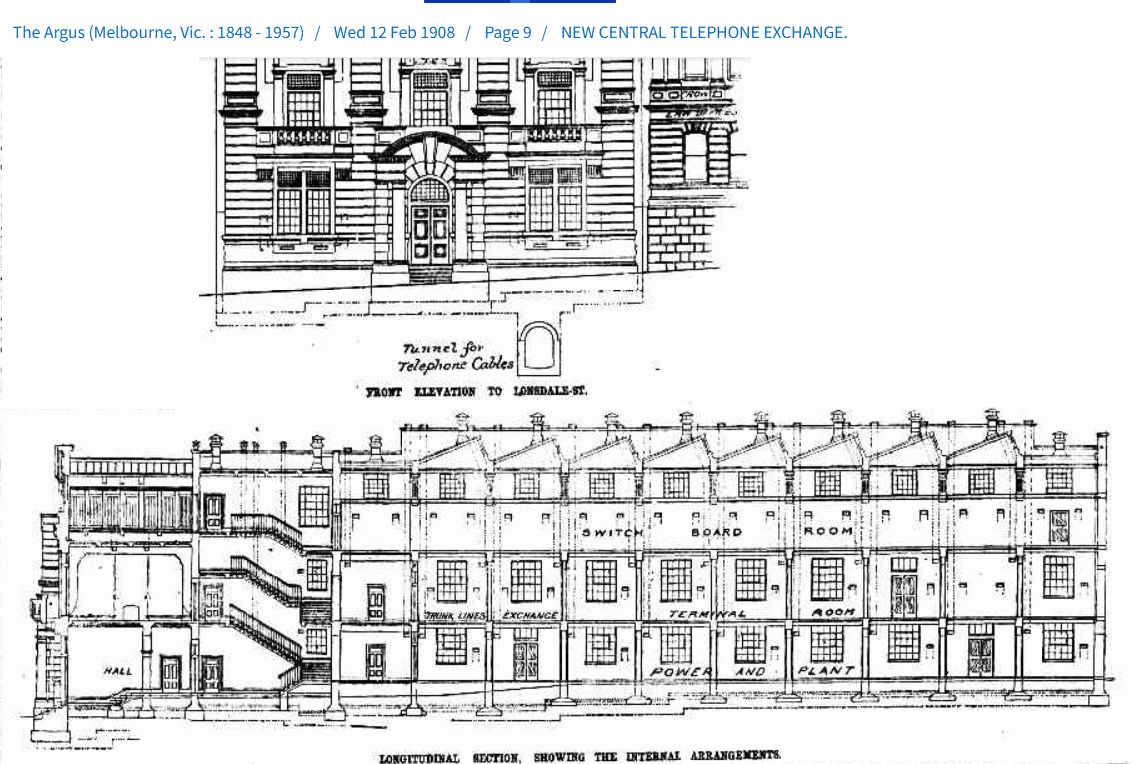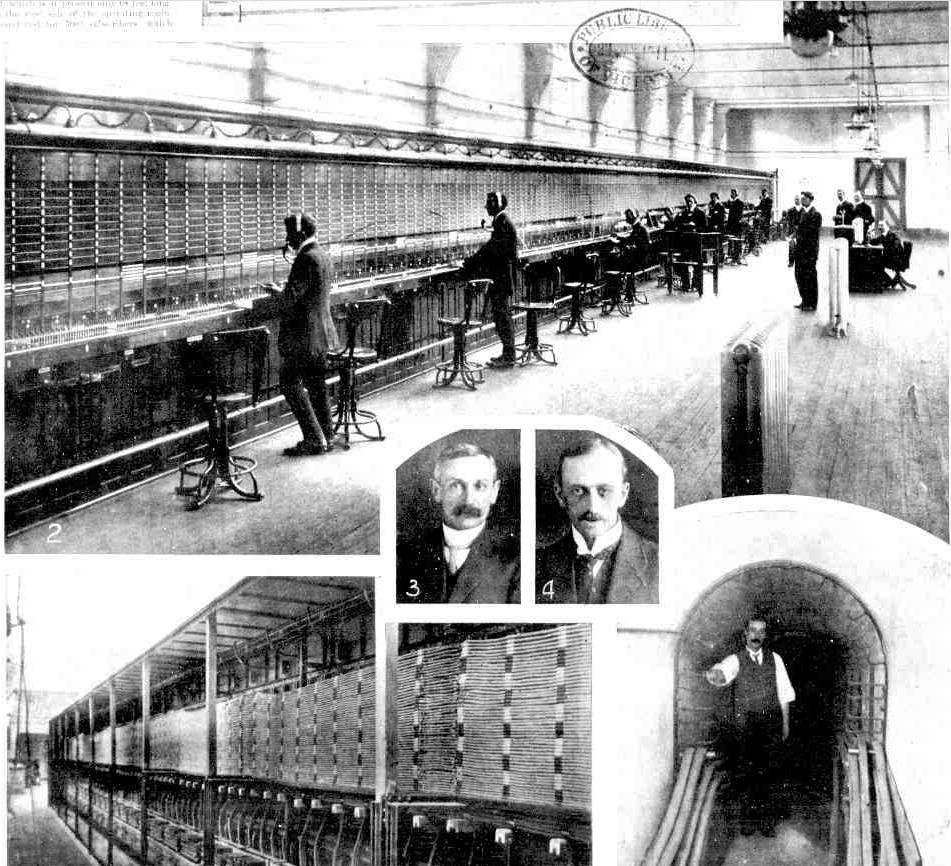

1. The New Central Telephone Exchange in Lonsdale-Street. 2. Eastern Section of Main Switchboard, Showing Officers Testing. 3. Mr. O. A. Junck, Departmental Officer in Charge. 4. Mr. E. H. Minnes, Contractor's Representative. 5. A Rear View of Switchboard, Showing Multiple and Other Cabling. 6. Entrance to Five Miles of Tunnels Under Melbourne. When both hang up, then the two lamps glow, but before the telephonist makes the disconnection she presses the meter key, which will register a call against number 8990. There are 400 outgoing junction wires connected with other exchanges, by which means the city telephone users can reach their suburban clients. The multiple field is the means by which it is possible for any operator to connect with any line. Each of the 9000 subscribers lines appears in the answering jack-field in the form of a 24-volt lamp and jack. Each of the 9000 again appears in the multiple field in 30 different portions of the whole switchboard; There are no fewer than 276.000 connecting jacks in the "multiple." Nine hundred cables, containing 64 wires each, are required to connect the multiple jacks with the answering jacks. The apparatus room is on the first floor, and immediately under the operating room. Here the main frame, provided with 12.500 lightning protectors, and intermediate distributing frame, which is for the purposes of regulating the telephonists' load according to the state of business, also for the purpose of receiving and distributing the 900 multiple cables, 450 answering cables, 450 relay cables, 450 main frame cables, 90 meter cables, &c., are situated. No less than 3000 miles of silk and cotton covered copper wire laid up in cable form was necessary for the various circuits. Each cable has its color scheme of 20 distinctive colors. An important feature of the new service will be the 9000 meters, that register the calls made by the subscribers. All lines for subscribers and operating circuits within the exchange are "fused"; whenever a fuse is "blown" by an excessive current it gives an automatic signal to the exchange officers. There are provided repeating coils, which repeat the voice currents from one line to the other, three dynomotors and power board, that generate an alternating current at 75 volts at about 16 cycles with an output of 2 amps. It is this current that the telephonists draw from when ringing subscribers telephone bells. These ringing machines have attached high and low speed battery interrupters, the current from which when used by the operator gives the familiar signals which signify that the line is either "busy" or "does not answer." There is a testing desk for the purpose of making rapid tests of any lines faulty or otherwise, locating same by a voltmeter and other apparatus, also for the purpose of calling by means of a "Howler set" any subscriber who has inadvertently left the receiver off his hook. The accumulators and the 20 h. p. charging machine are on the ground floor. The batteries are of the chloride type, they are in duplicate, each set consists of 15 cells, the main battery, has eleven cells, giving 24 volts for signalling, speaking, &c. It has a capacity of 3910 ampere hours (10 hour rated). Lead covered cables are now being run through the underground tunnels, which will connect the subscribers with a new switchboard. The contract for the switchboard, apparatus, &c., amounted to £43,000, the installing of which required the services of hundreds of fitters for 13 months. The contractors' engineer, Mr. E. H. Minnes, of London, is well pleased with the manner in which the work has been done, and quite recently handed the exchange over to the Postal department at being completed. Departmental officers are at present engaged in making searching tests of every cable and piece of apparatus for efficiency, before accepting the same from the Western Electric Company. The Postmaster-General and his Melbourne Deputy are very anxious to let the telephone users enjoy the benefits of the new service as early as possible. With that object in view, Mr. Hesleeth, the Chief Electrical Engineer, and Messrs. Jenvey, Howard, Howson, the Melbourne electrical engineers, are doing everything that is possible to have the "change-over" made at the earliest date that can be arranged.
** End of Page Go Top